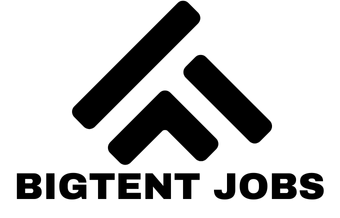Understanding Employee Retention
Effective employee retention is crucial in ensuring workforce stability, particularly in call centers. High turnover rates can severely impact operational efficiency, making turnover reduction a priority for managers. Let’s delve into why retention matters and how success can be measured.
One of the significant challenges call centers face is maintaining workforce stability amidst fluctuating demands. Retaining skilled employees not only keeps operations smooth but also reduces the costs associated with recruiting and training new staff. This, in turn, enhances customer service quality, which is vital for company reputation and customer satisfaction.
Topic to read : Designing an Effective Employee Training Strategy for Nottingham”s Logistics Industry
To gauge success in employee retention, managers must focus on key metrics. These include turnover rates, average tenure, and employee engagement scores. A low turnover rate coupled with high employee satisfaction is indicative of good retention practices. Good retention strategies often include competitive compensation, opportunities for career advancement, and a healthy workplace environment.
High turnover disrupts the rhythm of operations, leading to increased workloads for remaining employees and ultimately causing productivity declines. By prioritizing retention, companies can cultivate a stable workforce that drives efficiency and boosts morale. Implementing tailored retention strategies ensures that employees feel valued and committed, translating into sustainable business success.
Also to discover : Smooth gift wrap for elegant presentations and impressive gifts
Assessing Current Retention Challenges
Navigating the complex landscape of call center dynamics, Cardiff call centres often grapple with significant retention challenges. A pervasive issue is the high turnover rates that disrupt workflow and impact overall performance. Essential to addressing these problems is the comprehensive gathering of employee feedback. Understanding the reasons behind departures helps identify not only the surface issues but also the root causes.
Employee feedback plays a crucial role in shedding light on these concerns. By actively listening and analyzing what employees have to say, companies can pinpoint specific factors contributing to dissatisfaction and disengagement. It’s vital for organisations to create an open environment where team members feel comfortable voicing their concerns.
To further comprehend these retention challenges, a thorough analysis of turnover patterns is necessary. Delve into the reasons why employees leave or stay; this information provides actionable insights. Patterns might reveal common grievances related to work conditions, management styles, or career progression opportunities. Recognising these trends helps companies strategise and implement effective solutions that tackle these issues head-on. By focusing on underlying problems, call centres can foster a more stable and motivated workforce, ultimately improving their operational efficiency and workplace atmosphere.
Developing a Tailored Retention Strategy
Creating a Tailored Strategy for your organisation begins with recognising the specific elements that contribute to employee satisfaction. Understanding these foundational components is crucial in forming an effective Retention Plan.
Identifying key factors of employee satisfaction
Employee satisfaction is multifaceted, requiring attention to diverse needs such as career advancement, workplace atmosphere, and compensation. Recognising these aspects helps in formulating a Workforce Needs-focused strategy, ensuring that employees feel valued and motivated.
Aligning retention strategies with organizational goals
It’s essential to align your retention strategies with the overarching objectives of the organisation. A well-integrated Retention Plan will not only boost employee satisfaction but also propel the company toward its strategic aims. Ensure that each strategy supports and enhances organisational goals, creating a cohesive approach.
Customizing approaches for diverse employee groups
Understanding the cultural nuances in Cardiff’s call centers
Cardiff’s call centers present unique cultural dynamics that require specialised retention strategies. A deep understanding of these nuances aids in tailoring approaches to fit the specific environment and cultural expectations.
Addressing different motivational drivers among employees
Employees have varied motivational drivers, from financial security to professional growth. Identifying these drivers allows for creating a flexible framework tailored to meet distinct Workforce Needs, fostering a committed and engaged team.
Enhancing Workplace Culture
A positive workplace culture is vital for retaining top talent and enhancing productivity. When employees feel connected and motivated, it leads to increased employee engagement and fosters healthier team dynamics.
One crucial strategy for cultivating such an environment is open communication. Encouraging transparent dialogue among team members helps in resolving conflicts more efficiently and builds trust. Employers can establish forums or regular meetings where employees can voice concerns and offer suggestions. This approach not only includes employees in decision-making but also empowers them.
Equally important is the practice of celebrating successes. Recognizing employee contributions boosts morale and encourages continued efforts. Whether it’s through formal awards or informal acknowledgment during team gatherings, showing appreciation lets employees know their work matters.
Additionally, fostering collaboration is key to developing strong team dynamics. This could be achieved by organizing team-building activities or establishing cross-department projects to encourage interaction among different teams. When employees collaborate, innovation thrives, and so does the overall workplace environment.
Implementing these strategies can dramatically improve workplace culture, leading to happier employees and a more successful business overall. By prioritizing employee engagement and open communication, companies set the foundation for sustained growth and success.
Training and Development Opportunities
Providing employee training and opportunities for skill development is fundamental for fostering career advancement. Organisations prioritising these aspects not only enhance employee satisfaction but also increase overall productivity.
Importance of Continuous Learning
Continuous learning is crucial in today’s fast-paced environment. It keeps employees updated with industry trends, enhancing their capability to tackle complex challenges efficiently. By investing in regular skill development, companies ensure their workforce remains competitive and adept in their roles.
Implementing Mentorship Programs
Mentorship programs enhance employee engagement and aid in career growth. By pairing less experienced employees with seasoned professionals, organisations enable knowledge transfer, which promotes an enriching learning environment. Mentorship fosters not just skill enhancement but also cultivates leadership qualities.
Assessing Training Effectiveness
To ascertain the success of training initiatives, it’s essential to align them with career advancement goals. Incorporating feedback is vital to refining training programs. Tracking employee retention and performance post-training offers insights into effectiveness. Measuring these outcomes grants a better understanding of the program’s impact, revealing opportunities for continual improvement and ensuring resources are invested wisely.
Incentives and Benefits
Offering robust Employee Incentives is crucial to attracting and retaining talent in the competitive landscape of call centers. Incentives can take various forms, such as Benefits Packages tailored to meet the unique needs of employees. These packages often include health insurance, retirement plans, and paid time off, providing a sense of security and well-being.
To further boost employee satisfaction and loyalty, Retention Bonuses play a pivotal role. These bonuses are financial rewards offered at regular intervals to encourage employees to remain with the company for a longer duration. Implementing retention bonuses as part of a broader compensation strategy can significantly reduce turnover rates.
Attractive Incentive Programs and Their Impact
-
Customized Benefits Packages: These packages should address the diverse needs of employees, promoting a healthy work-life balance and reducing stress.
-
Monetary and Non-Monetary Incentives: Besides financial rewards, non-monetary incentives like flexible working hours and professional development opportunities can enhance employee motivation.
Creating a comprehensive blend of employee incentives not only helps in recruiting skilled individuals but also fosters a culture of appreciation and growth. By strategically integrating benefits packages and retention bonuses, organizations can ensure higher levels of employee satisfaction and a stable workforce.
Measuring Retention Success
Evaluating retention success is crucial for any organisation aiming for long-term stability and growth. This requires identifying and employing both quantitative and qualitative retention metrics and dedicating efforts to continuous improvement.
Identifying Key Performance Indicators (KPIs)
To effectively track retention success, businesses must establish key performance indicators (KPIs). KPIs such as employee turnover rates, the duration of employment, and employee satisfaction scores provide insight into the workplace environment. These indicators help in understanding patterns and identifying necessary changes to enhance retention metrics.
Regularly Reviewing and Adjusting Retention Strategies
For sustained success, it’s vital to frequently review and adjust retention strategies. Continuous improvement involves analysing current KPI data and exploring new strategies to strengthen employee engagement. Through regular assessments, management can stay proactive in modifying strategies to align with evolving employee needs and industry trends.
Best Practices for Reporting Retention Data
Reporting data accurately aids in effective decision-making and strategic planning. Utilising both qualitative and quantitative feedback is essential. While qualitative data offers personal insights and opinions, quantitative metrics highlight trends. Establishing benchmarks for retention metrics ensures improvement tracking over time. Emphasising consistent and comprehensive reporting enables organisations to make data-driven decisions, supporting a culture of growth and retention.










